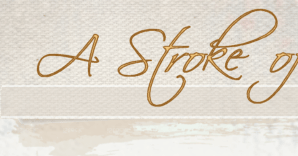 |
 07-15-2005, 10:51 AM
07-15-2005, 10:51 AM
|
#1
|
|
UNVEILINGS MODERATOR
Juried Member
Joined: May 2005
Location: Narberth, PA
Posts: 2,485
|
What is "traditional" portraiture?
Would anyone like to share their thoughts on what makes a portrait "traditional?"
There are so many schools of realism now, which is a good thing for all the artists like me who began painting when realism was not in fashion. Traditional realism is one, and there is academic realism (a more specific subset of traditional, or another word for the same thing?), contemporary realism, and progressive realism, and there probably more that I can't think of right now.
There are artists who imitate, at least to some degree, the look of a past style. And there are artists who take stylistic elements from the past and make their own contemporary statement.
Does the word traditional also imply an expected or preferred way in which men, women and children are depicted? Are there certain qualities that the artist is expected to emphasize? Has anyone ecountered problems when trying to depart from a client's expectations? Has anyone struggled internally with this question? I would love to hear others' thoughts on this subject.
|
|
|

|
 07-15-2005, 12:09 PM
07-15-2005, 12:09 PM
|
#2
|
|
CAFE & BUSINESS MODERATOR
SOG Member
FT Professional
Joined: Jul 2001
Location: Seattle, WA
Posts: 3,460
|
While I'm sure there are as many interpretations as there are artists, I think of "traditional portraiture" as the kind of work that was generally done before 1900, pre-Impressionists, I suppose, or more specifically, pre-Cezanne.
Since there are the "Pre-Raphaelites," will artists of our ilk be known to future generations as the "Pre-Cezannites"?
|
|
|

|
 07-15-2005, 09:12 PM
07-15-2005, 09:12 PM
|
#3
|
|
UNVEILINGS MODERATOR
Juried Member
Joined: May 2005
Location: Narberth, PA
Posts: 2,485
|
Maybe, but are we really trying to go back? It's true, we don't have a clue how future art historians will classify us. Maybe they will see us as Pre-Cezanne! But then the realists working today have been influenced in so many ways by modern art. I can't imagine your beautiful double portrait for the opera existing without the influence of modern art.
I see tradition in two ways. I see it as a continuum that has a leading edge comprised of today's artists. Everything that we have at our fingertips, so to speak, from compositional possibilities to new technologies, are the products of what has gone before. Everything we do is grounded in the work that has gone before. When Sargent was painting, he was as modern as Cezanne, though maybe he wasn't perceived as such at the time. I have a hard time looking back and not including the modern movement in the continuum.
But then, on the other hand, I know what you mean when you say you think of traditional portraiture as "pre-Cezanne." There is the whole idea of being "traditional" which most definitely does not include abstract, conceptual art. If I look back from this perspective I can't help seing modern art as an odd kind of blip on the continuum of art history, though personally I like a lot of "contemporary" art and I am just as inspired by Alice Neel as by the more "realistic" painters. (I can't say I'm too fond of installations, though.)
I guess we are somehow grounded in tradition, no matter what style we are working in.
|
|
|

|
 07-17-2005, 08:49 PM
07-17-2005, 08:49 PM
|
#4
|
|
Juried Member
FT Professional
Joined: Feb 2002
Location: Gaithersburg, Maryland
Posts: 698
|
It seems to me we have gotten away from "traditional" portraiture when it comes to drawing. There is very little taught in drawing, other than photo realism. I have been labeled an extremist for calling for traditional methods in drawing, whatever they may be. Too many artists get into abstractions before they have a clue what they are doing.
I have referred to Paul Calle in another section under "Methods of Seeing" / "Line First". Paule Calle mentions in his book the "traditional" methods of drawing, and refers to the sketch method of shade lines which flow diagonally with the elbow as the hinge point. He digressed from this tradition in his wonderful stylish drawings for NASA and Ladies Home Journal by drawing the shade lines along the contours of the form rather than just conveniently ergonomic.
This calls to a time when there was a specific method of teaching drawing, as opposed to today's two extremes: photo realism and nothing. I think it can be said that there was merit to the "traditional" methods of drawing. In todays art schools, we have PHds teaching art who do not have a clue about drawing, and any "traditional" methodolgy.
|
|
|

|
|
Currently Active Users Viewing this Topic: 1 (0 members and 1 guests)
|
|
|
 Posting Rules
Posting Rules
|
You may not post new threads
You may not post replies
You may not post attachments
You may not edit your posts
HTML code is Off
|
|
|
|
|
|
All times are GMT -4. The time now is 06:31 AM.
|

